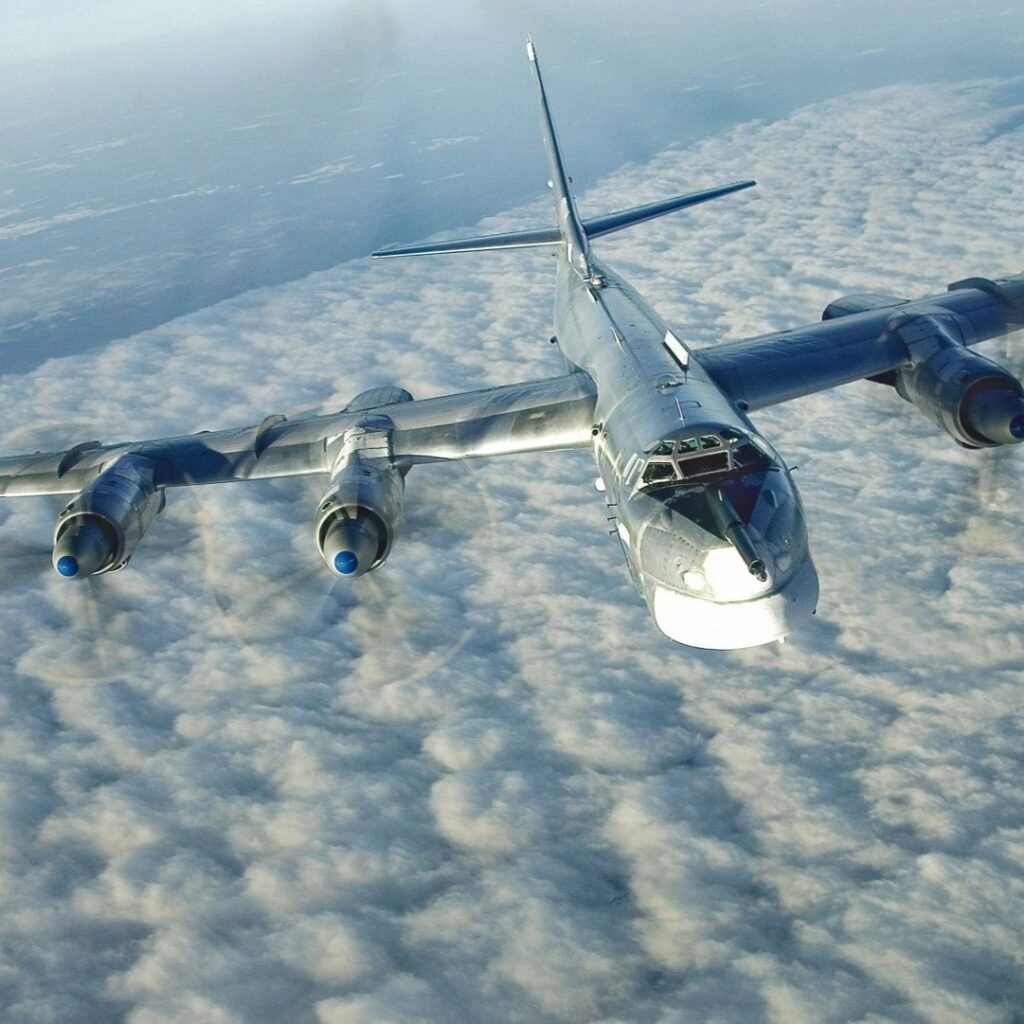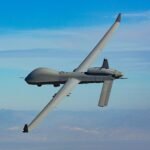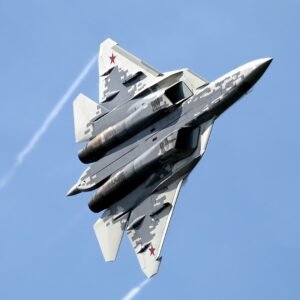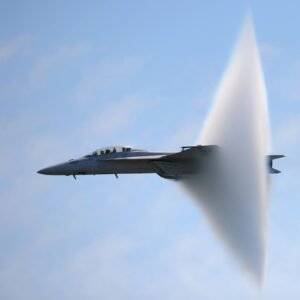The Tupolev Tu-95 Bomber is a strategic long-range bomber aircraft made by the Soviet Union. The Tupolev Tu-95 during the Cold War era. It first flew in 1952 and is still in service with the Russian Air Force today, making it one of the longest-serving military aircraft designs in history.

Development
Tupolev Tu-95 Bomber’s development began in the early 1950s, with the aim of creating an aircraft that could provide the Soviet Union with a nuclear strike capability against the United States. The design of the Tu-95 is characterized by its large, bulbous fuselage and swept-wing design, which gave it its distinctive appearance.
What are The General Characteristics of The Tupolev Tu-95 Bomber:
- Crew: 7-8 (pilot, co-pilot, navigator, flight engineer, communication systems operator, two gunners, and optional electronic warfare officer)
- Length: 46.2 meters
- Wingspan: 50.1 meters
- Height: 12.12 meters
- Empty weight: 90,000 kg (198,000 pounds)
- Max takeoff weight: 188,000 kilograms (414,000 pounds)
- Powerplant: 4 × Kuznetsov NK-12M turboprop engines, each producing 15,000 horsepower
- Maximum speed: 920 kilometers per hour (570 miles per hour)
- Cruise speed: 650 kilometers per hour (400 miles per hour)
- Range: 15,000 kilometers (9,000 miles)
- Service ceiling: 13,716 meters
- Fuel capacity: The Tu-95 has a total fuel capacity of around 125,000 liters (33,000 gallons).
- Payload capacity: The aircraft has a maximum payload capacity of around 20,000 kg (44,000 lb).

The Tupolev Tu-95 is a large, four-engine aircraft with a distinctive swept-wing design. The aircraft features a glazed nose section that houses the cockpit, as well as a large bomb bay in the fuselage. The aircraft is equipped with four Kuznetsov NK-12M turboprop engines, each driving a contra-rotating propeller, which provides a significant amount of power and allows the aircraft to fly at high altitudes.
The Tu-95’s wings are swept back at an angle of 35 degrees, giving the aircraft a distinctive appearance. The wings also feature a unique leading-edge slat system, which provides additional lift and allows the aircraft to fly at slower speeds. The aircraft’s landing gear is retractable and consists of a nose wheel and two main landing gear units.
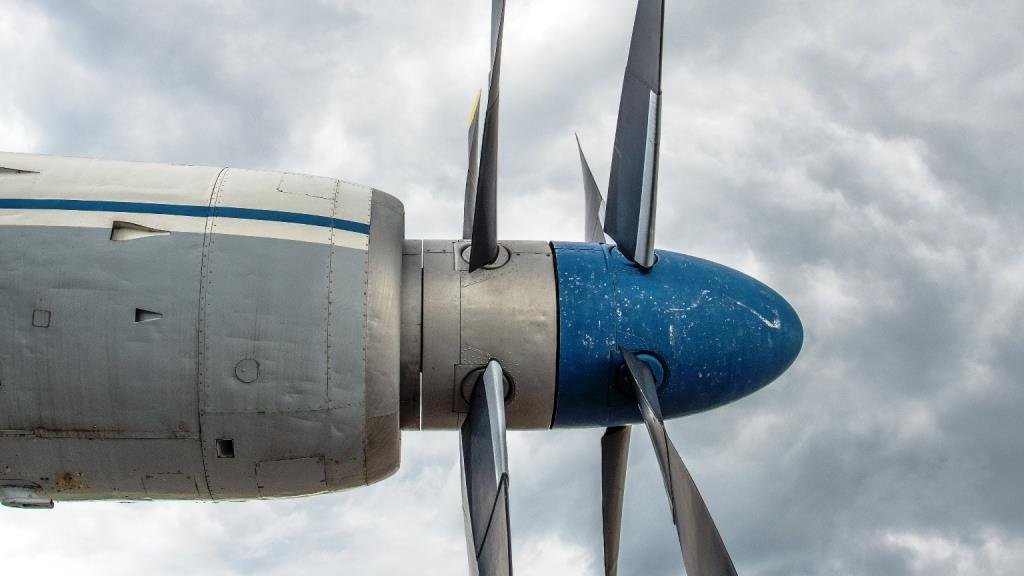
Which Avionics and Sensors are Fitted on The Tupolev Tu-95 Bomber?
The avionics and sensors on the Tu-95 provide the crew with advanced capabilities for navigation, communication, and mission execution. The aircraft’s radar and electronic warfare systems also help to protect the aircraft from threats, while the in-flight refueling system extends the aircraft’s operational range.
- Navigation systems: The Tu-95 is equipped with an inertial navigation system (INS) and a radio navigation system. The INS provides precise position and velocity information, while the radio navigation system allows the crew to navigate using ground-based radio beacons.
- Communication systems: The Tu-95 features a range of communication systems, including a radio communications system and a secure data link. These systems allow the crew to communicate with ground personnel, other aircraft, and military command and control centers.
- Radar systems: The Tu-95 is equipped with a range of radar systems, including a search radar, a targeting radar, and a terrain-following radar. These systems allow the crew to detect and track enemy targets, even at long ranges, and to navigate at low altitudes.
- Electronic warfare systems: The Tu-95 features a range of electronic warfare systems, including a radar warning receiver, a missile approach warning system, and a chaff and flare dispenser. These systems help to protect the aircraft from enemy radar-guided missiles and other threats.
- In-flight refueling system: The Tu-95 is equipped with an in-flight refueling system, which enables the aircraft to receive fuel from tanker aircraft while in flight. This extends the aircraft’s range and allows it to conduct long-duration missions.

How Many Armaments can The Tupolev Tu-95 Bomber Carry?
The Tupolev Tu-95 bomber is primarily designed for strategic bombing missions and is equipped with a range of armaments to carry out this mission. The aircraft has four internal bomb bays that can hold up to 24,000 kg (52,910 lb) of various types of bombs, including nuclear bombs. The aircraft can also be equipped with air-launched cruise missiles (ALCMs) and anti-ship missiles.
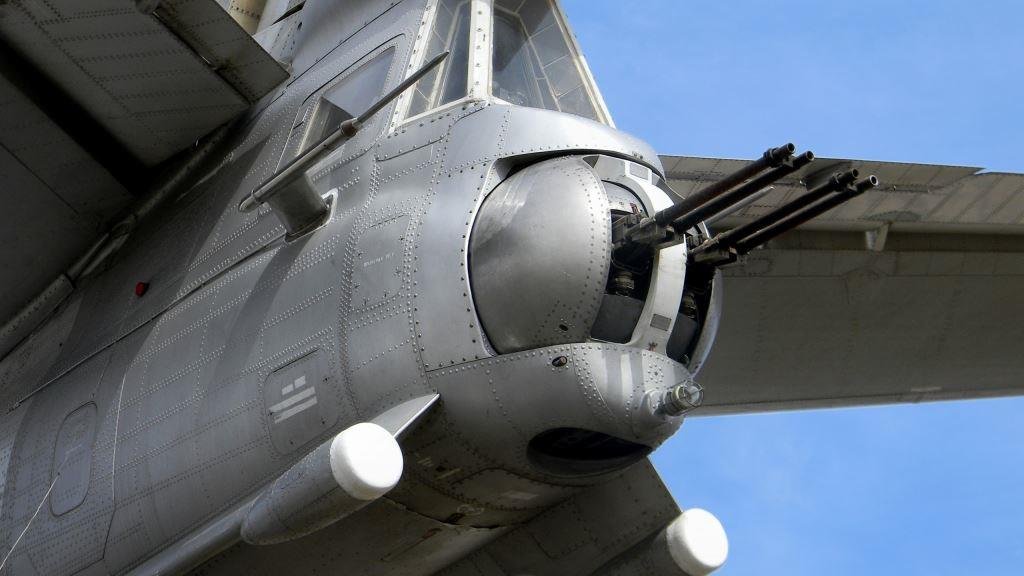
Bombs:
The Tu-95 is capable of carrying a range of bombs, including nuclear and conventional gravity bombs. The aircraft’s internal bomb bays can hold up to 24,000 kg (52,910 lb) of bombs, and the aircraft can be fitted with various bomb racks and ejector systems for different types of bombs. The aircraft is capable of carrying free-fall bombs, parachute-retarded bombs, and earth-penetrating bombs.
Air-Launched Cruise Missiles:
The Tu-95 is capable of carrying a range of air-launched cruise missiles, including the Kh-55 and Kh-101 cruise missiles. The Kh-55 has a range of up to 3,000 km (1,864 miles) and can carry a nuclear or conventional warhead. The Kh-101 has a range of up to 5,000 km (3,107 miles) and is capable of carrying a conventional warhead.
Anti-Ship Missiles:
The Tu-95 can also be equipped with anti-ship missiles, including the Kh-22 and Kh-15 missiles. The Kh-22 has a range of up to 600 km (372 miles) and is capable of carrying a nuclear or conventional warhead. The Kh-15 has a range of up to 300 km (186 miles) and is designed to destroy enemy ships.
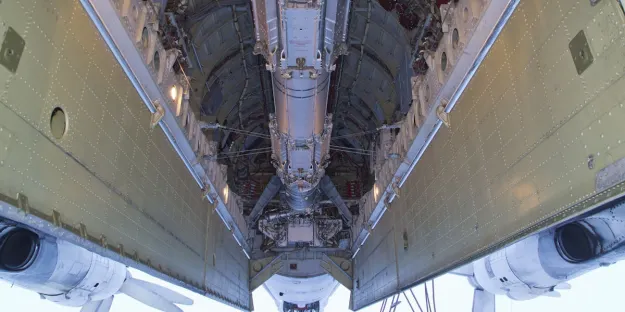
Operational History
The Tu-95 played a significant role in the Cold War, with the Soviet Union using it as a long-range strategic bomber to project its military power across the globe. During the Vietnam War, the Tu-95 was used to provide aerial refueling for Soviet fighters and bombers operating in North Vietnam. It was also used extensively in Afghanistan during the Soviet-Afghan War, where it was used for both bombing missions and as an airborne command center.
Today, The Tu-95 remains a significant part of Russia’s military arsenal and is still used for long-range strategic bombing missions and reconnaissance flights. Its role has also expanded to include anti-submarine warfare and maritime patrol missions.
Criticism and Controversy
The Tu-95 has not been without its share of criticism and controversy. The aircraft’s large size and powerful engines have raised environmental concerns, while its safety and reliability have been questioned by some. The use of the Tu-95 in military operations has also led to international tensions and concerns over the potential for nuclear conflict.

How Many Variants of Tupolev Tu-95 Bomber?
- Tu-95 (Tu-20) – This is the original variant of the Tu-95, which entered service in 1956. It featured four turboprop engines and a crew of six.
- Tu-95K – This variant of the Tu-95 was modified to carry the Kh-20 air-launched cruise missile, which had a range of up to 3,500 km. The Tu-95K added service in 1961.
- Tu-95MS – This is the most widely produced variant of the Tu-95, and it is still in service with the Russian Air Force today. The Tu-95MS features more powerful engines and upgraded avionics, as well as the ability to carry the Kh-55 and Kh-101 air-launched cruise missiles.
- Tu-95MR – This variant of the Tu-95 is equipped with advanced reconnaissance equipment, including cameras and electronic intelligence sensors. The Tu-95MR is used for surveillance and reconnaissance missions, and it can also carry a limited amount of armament for self-defense.
- Tu-95LAL – This variant of the Tu-95 was designed as a testbed for experimental liquid hydrogen-fueled engines.
- Tu-95RTs – This variant was modified for in-flight refueling, allowing for extended range and endurance. The Tu-95RTs could refuel other aircraft as well, making them a valuable asset in long-range operations.
- Tu-95U – This variant was used for crew training and featured a modified cockpit with dual controls for the instructor and student pilot.
- Tu-95V – This variant was a specially modified Tu-95 that was used to test experimental engines, including the Kuznetsov NK-12MV turboprop engine.
- Tu-95MSM – This is a modernized version of the Tu-95MS, featuring upgraded avionics, new weapons systems, and improved engines. The Tu-95MSM is currently in development and is expected to enter service in the Russian Air Force in the coming years.
- Tu-95MD – This variant of the Tu-95 was modified to carry the Kh-55SM air-launched cruise missile, which has an improved guidance system and a range of up to 3,000 km.
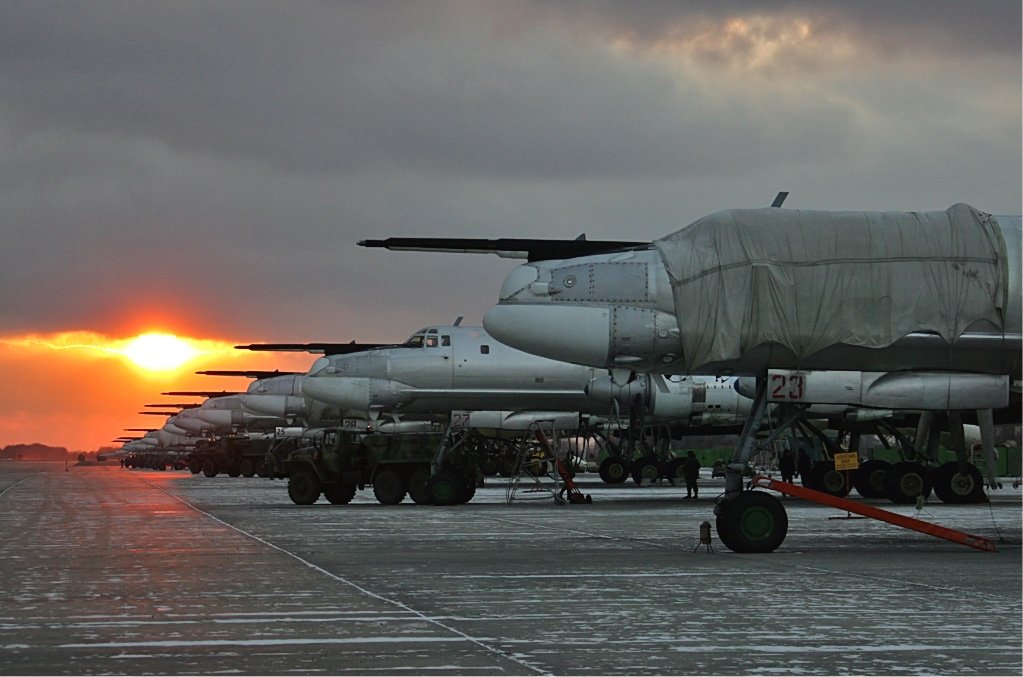
How Many Prototypes of Tupolev Tu-95 Bomber?
There were several prototypes and experimental versions of the Tupolev Tu-95 bomber, some of which paved the way for the development of the production models.
- Tu-95LL – This was a modified version of the Tu-95 that was used as a testbed for experimental engines, including the Kuznetsov NK-12M turboprop and the Kuznetsov NK-16 turbojet. The Tu-95LL was also used to test new avionics and other systems.
- Tu-95LAL – This was another modified Tu-95 that was used to test experimental liquid hydrogen-fueled engines in the 1960s. The Tu-95LAL was able to complete several successful test flights, but the program was ultimately canceled due to the high cost and technical challenges of using liquid hydrogen as a fuel.
- Tu-116 – This was a commercial airliner variant of the Tu-95 that was developed in the 1950s. The Tu-116 was designed to carry up to 120 passengers and had a range of over 10,000 km (6,200 miles). However, the Tu-116 was never produced in large numbers, and only a handful was built for use by the Soviet government and other VIPs.
- Tu-119 – This was an experimental version of the Tu-95 that was modified to carry a nuclear reactor for testing purposes. The reactor was used to power the aircraft’s systems, including the engines and avionics. The Tu-119 completed several successful test flights in the late 1950s, but the program was ultimately canceled due to safety concerns.

What is The NATO Code Name bear?
“Bear” is the NATO reporting name for the Tupolev Tu-95 bomber. NATO assigns reporting names to aircraft and other military equipment used by the armed forces of the Soviet Union and later, Russia, as well as other nations. These names are used primarily for identification and communication purposes. The “Bear” name is fitting for the Tu-95 bomber, as it is a large and powerful aircraft that can be quite imposing in appearance.
What is The Difference Between The Tupolev Tu-95 and The Boeing B-52?
The Tupolev Tu-95 and the Boeing B-52 are both long-range strategic bombers. They were developed during the Cold War and have been in service for several decades. While there are some similarities between the two aircraft, there are also some notable differences.
According To Size:- the B-52 is slightly larger than the Tu-95, with a wingspan of over 185 feet compared to the Tu-95’s wingspan of just under 165 feet. The B-52 is also faster, with a top speed of around 650 miles per hour, compared to the Tu-95’s top speed of around 575 miles per hour. The B-52 has a longer range than the Tu-95, with a maximum range of over 8,000 miles compared to the Tu-95’s maximum range of around 6,800 miles.
According To Armaments:- Both aircraft are capable of carrying a variety of weapons, including conventional and nuclear bombs, missiles, and torpedoes. However, the B-52 is capable of carrying a larger payload than the Tu-95, with a maximum weight of over 70,000 pounds compared to the Tu-95’s maximum weight of around 33,000 pounds.

Both the B-52 and the Tu-95 have undergone numerous upgrades and modernizations over the years to keep them relevant and effective in modern warfare. The B-52, for example, has been upgraded with new engines, avionics, and weapons systems, while the Tu-95 has received upgrades to its engines and sensors.
Overall, both the B-52 and the Tu-95 are powerful, long-range strategic bombers that have played important roles in military operations and strategic deterrence over the years. While there are some differences between the two aircraft, they are both formidable weapons that have helped shape the course of modern warfare.
Summary
The Tupolev Tu-95 bomber has played a significant role in military aviation, with its design and capabilities shaping modern warfare and military strategy. Its longevity and impact on the arms race and nuclear deterrence make it an important piece of aviation history, while its continued service in the Russian Air Force underscores its ongoing military significance. Despite criticism and controversy, the Tu-95 remains a powerful symbol of military might and technological achievement.
Do you know the Best Stealth fighter is Lockheed F 35 Lightning 2?

